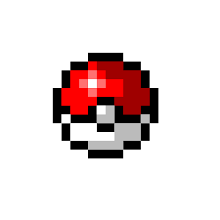"The ecology of Pokemon Go"
#PokemonGO: There has been a lot of discussion of gym stagnation lately. This has gotten me thinking about the ecology of the game. Here I will lay out an ecological argument for the inevitability of gym stagnation due to regional team imbalance (local variation in the number of players in each team). This is not meant to be a complaint or suggestion post; I am merely trying to look at the game in a different light and make some general observations based on ecological models.Pokemon Go is essentially a very simple game of "King of the Hill". As such, it is a zero-sum game with the only resource being gym occupancy. In ecology, there is this idea called the competitive exclusion principle, which states that two or more species competing for the same resource cannot co-occupy the same niche. The species that is most efficient at obtaining the resource will either drive the others to extinction, or will force the others to migrate elsewhere.What’s interesting about Pokemon Go is that the dynamics can be characterized by what’s known as the Allee effect, which is the positive relationship between the fitness of a population and its population density. If we imagine each gym as a local resource, the "efficiency" at obtaining this resource is a function that is density dependent (density here refers to regional player population size in each team). It is easy to see that the team with the most players in a local region will have the advantage over the other two teams (i.e. the most populous team is the most fit in a local region). This has the effect of driving out players from the other teams, as they either give up on playing the game altogether (extinction scenario), or are forced to travel to other regions where their team is the dominant one (migration scenario). Even if level 10 gyms were to be made easier to take down, or if they gave out rewards for being taken down, the local gyms will still be, on average, occupied by the dominant team most of the time, as a direct consequence of the Allee effect. Over time, the regional dominant team will only become more dominant, leading to, once again, gym stagnation.In nature, the competitive exclusion principle does not always hold, because there are often mechanisms that promote species co-existence, such as the presence of multiple resources or negative density dependence. The latter is interesting to consider, because this aspect of species self-limitation is actually present in Pokemon Go. Once a region has reached the carrying capacity (i.e. all gyms of one color are level 10), some players may begin to set up secondary accounts of a different team to knock down the bottom level of gyms just so that they can put their own pokemon in. This behavior is, in fact, a source of some recent complaints, but again, this is inevitable given the nature of the game.I am personally not an ecologist, but suffice to say that some insights into the game can be gained from ecological models. I encourage others to explore this further.TL;DR The nature of the game is such that local co-existence of teams is an unstable equilibrium, caused primarily by the initial imbalance in player distribution across teams. via /r/TheSilphRoad http://ift.tt/2dYT40Z
"The ecology of Pokemon Go"
!["The ecology of Pokemon Go"]() Reviewed by The Pokémonger
on
05:52
Rating:
Reviewed by The Pokémonger
on
05:52
Rating:


No comments